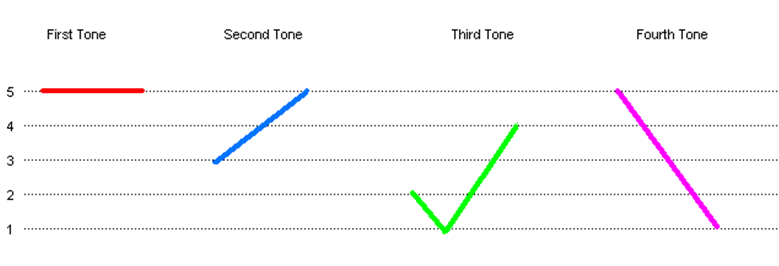Is your Mandarin understandable?
Mandarin is a tonal language which contains five tones, which are four tones and a neutral tone (toneless tone). Every Chinese word is composed of a syllable. It is not necessary that every syllable will have all the five different tones, but when it does, each tone usually conveys a different meaning. For mandarin beginners, speaking mandarin in incorrect tones is often one of the major reasons why their Mandarin is not understandable by others. Even when you know the certain Chinese words or phrases very well, if you are not using the correct tones, others may still have little idea or even misunderstand of what you are talking about.
Now let’s have a look at the five tones in Mandarin Chinese (See picture).

Note: the fifth tone is a neutral tone, which is a toneless tone and has no tone mark.
The first tone is a flat tone and it is high but remains level. The second tone is a rising tone. The third is a falling-rising tone (looks like “V”). The fourth toe is a falling tone, and there’s also a neutral tone (toneless).
Take the syllable “ba” for example, the first tone “bā” means “eight”; the second tone “bá” means “to pull”; the third tone “bǎ” means “target”; the fourth tone “bà” means “dad”. Finally, the fifth tone “ba” is an auxiliary word and is often put at the end a sentence to make a suggestion sentence.
Apart from the original tones that most Chinese words have respectively, some words may need to change their tones into other tones in certain phrases. For example, the word “Yī” (meaning one) originally has the first tone, but when it is in the phrase “Yí gè rén” (meaning one person) it should change into the second tone.
So, you can imagine how confusing it would be if we are using incorrect tones in Mandarin Chinese!
Anne Ma (Mandarin Language Consultant)



Latest Comments